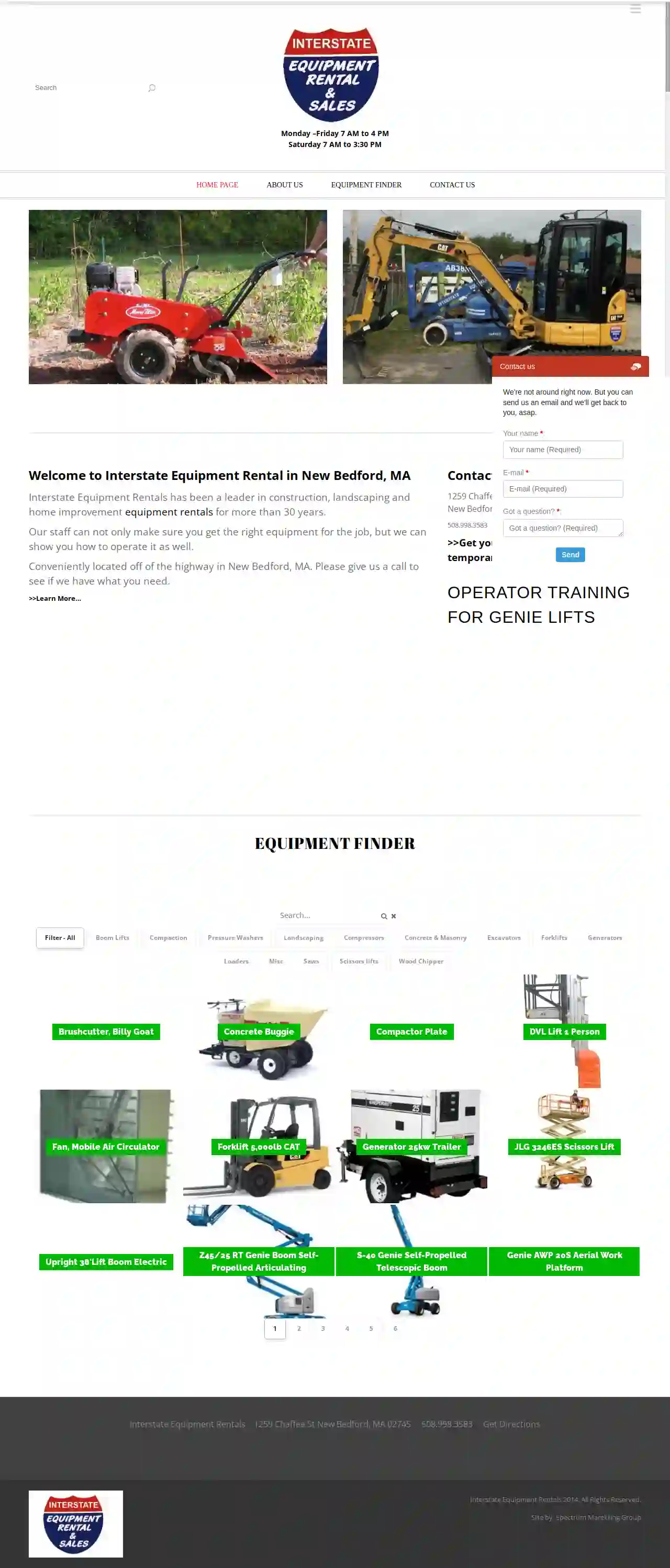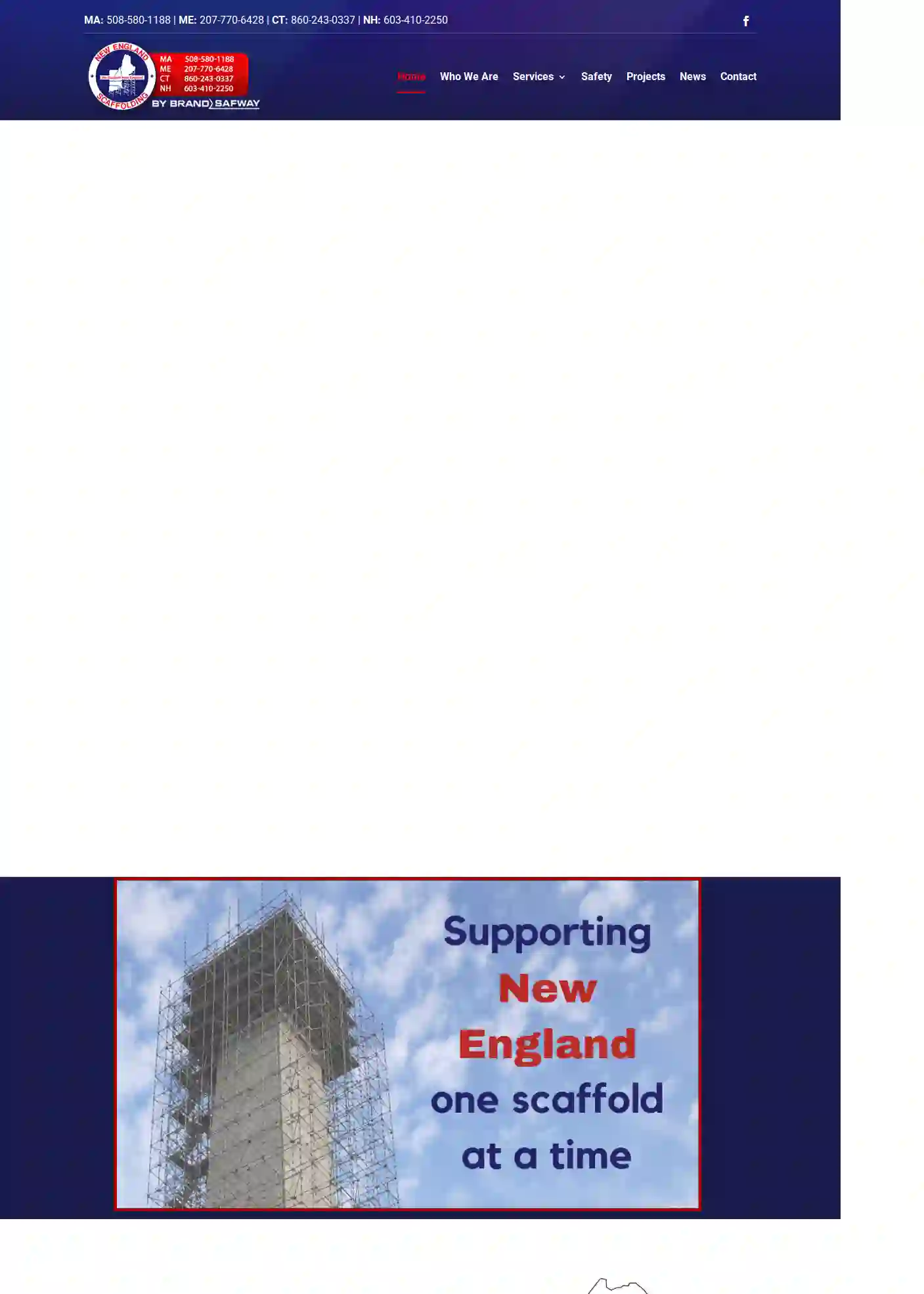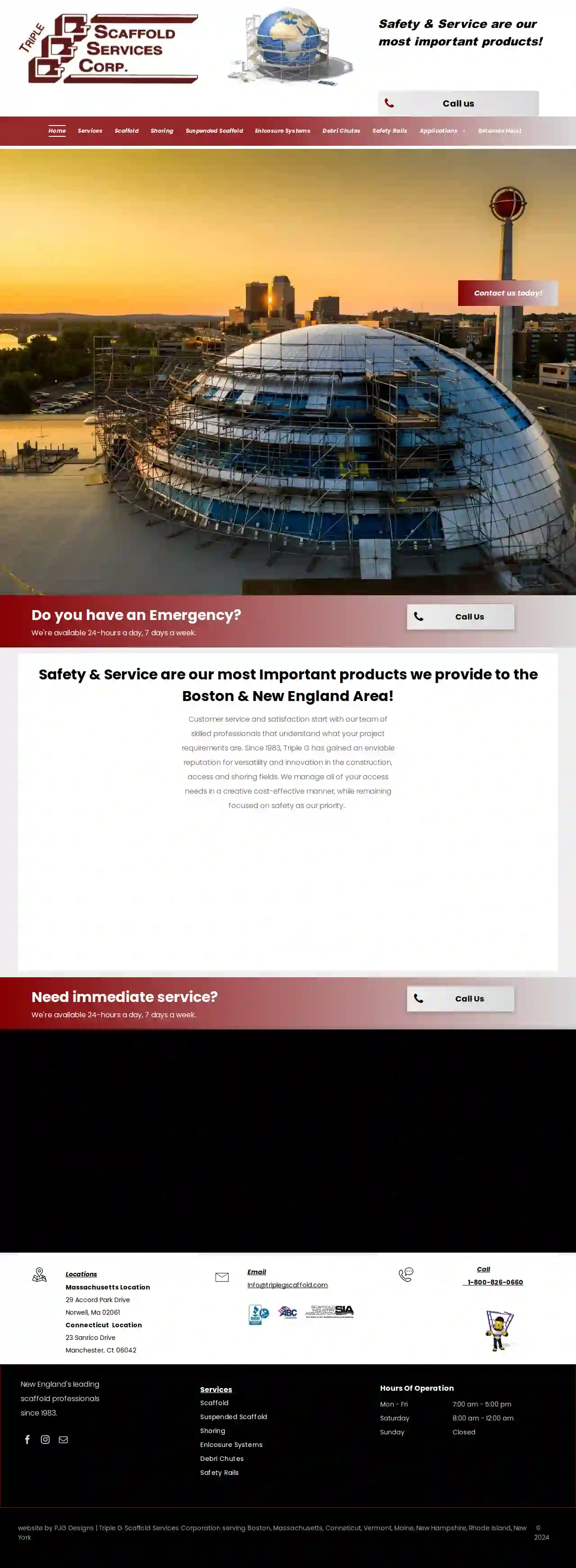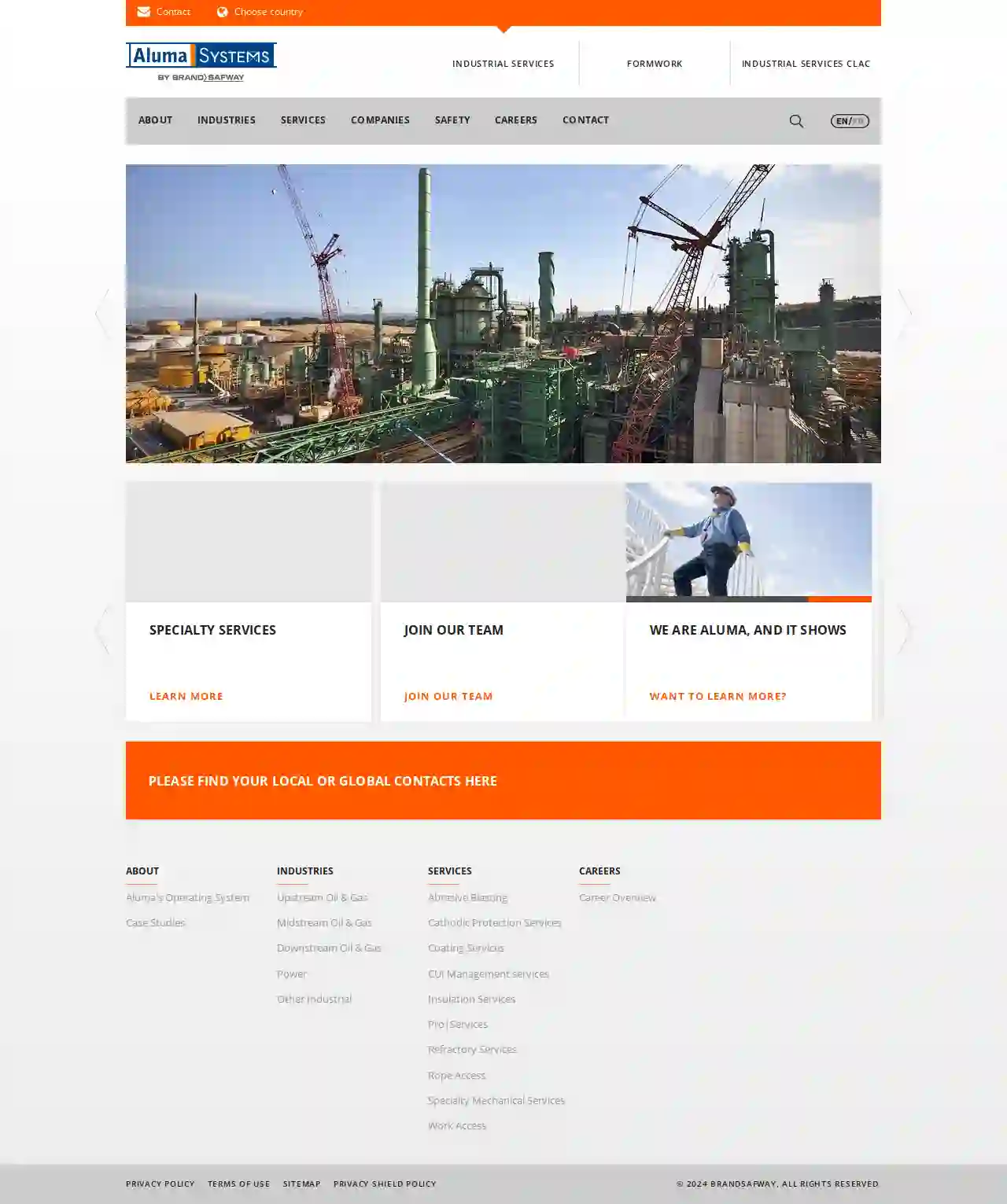Scaffolding Companies Revere
Top Scaffolding Experts in Revere
Receive multiple Scaffolding Erectors quotes for your project today! Compare profiles, reviews, accreditations, portfolio, etc... and choose the best offer.

Interstate Equipment Rental & Sales
4.327 reviews1259 Chaffee St, New Bedford, 02745, USWelcome to Interstate Equipment Rental in New Bedford, MA. Interstate Equipment Rentals has been a leader in construction, landscaping and home improvement equipment rentals for more than 30 years. Our staff can not only make sure you get the right equipment for the job, but we can show you how to operate it as well. Conveniently located off of the highway in New Bedford, MA. Please give us a call to see if we have what you need.
- Services
- Why Us?
- Gallery
Get Quote
New England Scaffolding
4.214 reviews412 R Washington St, Norwell, 02061, USNew England Scaffolding is a leading provider of scaffolding solutions for various industries. With offices in Massachusetts, Maine, Connecticut, and New Hampshire, we offer a range of services including scaffolding, shoring, suspended scaffolding, containment, temporary fencing, and debris chutes. Our team of experts will work with you to design a custom solution that meets your specific needs and ensures your project is completed safely and efficiently. With over 20 years of experience, we have established ourselves as a trusted partner for many clients. Contact us today to learn more about our services and how we can help you achieve your goals.
- Services
- Why Us?
- Gallery
Get Quote
Commonwealth Scaffold
59 reviews88 Eastern Ave, Malden, 02148, USWe Build Safe, So You Can Build Safer Commonwealth Scaffold, LLC serves Boston and the New England area market and is committed to providing our customers with the highest quality scaffolding products and service. Our History A union company with a focus on safety and bringing innovative solutions to complex jobsites. Commonwealth Scaffold, founded in 2007 by Luke McKinnon and Peter Volpe, is a Boston based scaffolding contractor servicing the New England area with the highest quality scaffolding planning and erection. Our main objective is to deliver safe and innovative solutions to your difficult builds. We use experience, open communications, a safety oriented approach and innovative design to accomplish our clients’ goals and needs. Our extensive portfolio of specialized services includes: scaffolding, coatings, insulation, refractory, formwork and shoring, specialty mechanical services, trash chutes and other related crafts. Our Approach Experience A team with unrivaled experience and leading edge training. Communication Managment that listens to our clients unique challenges and goals. Safety A focus on safety to keep your jobsite injury-free and on schedule. Innovation Solution oriented approach to complex builds and jobsites.
- Services
- Why Us?
- Our Team
- Gallery
Get Quote
Lynn Ladder & Scaffolding Co., Inc.
3.813 reviewsLynn, MA, USLynn Ladder was founded in 1946 by Bernie Kline. Bernie’s mission was to provide Ladders and Scaffolding to contractors in the New England area. Today, the third generation of Kline’s continue to pursue that goal across the Eastern United States. Service and quality are paramount in this endeavor. At each of the Lyn-Lad companies, we strive to provide each of our customers with reasonably priced, high quality products in a timely manner.
- Services
- Why Us?
- Accreditations
- Gallery
Get Quote
Lynn Ladder & Scaffolding Co., Inc.
4.253 reviews25 Fordham Rd, Lynn, 01902, USLynn Ladder was founded in 1946 by Bernie Kline with a mission to provide ladders and scaffolding to contractors in the New England area. Today, the third generation of Kline's continue to pursue that goal across the Eastern United States. Service and quality are paramount in this endeavor. At each of the Lyn-Lad companies, we strive to provide each of our customers with reasonably priced, high quality products in a timely manner. One of the main focuses of our company is rental equipment. This is backed by over 45 years of scaffolding experience. Our qualified employees can handle the scaffold needs of contractors, both large and small. Our services range from engineering to manufacturing specialty products that are required by contractors to complete their jobs. We continue to manufacture many products in the United States. This provides many local jobs and allows us to make different custom products with a quick turnaround, giving us a competitive edge. Safety is always a factor in renting and selling the many products we manufacture and distribute. Lyn-Lad has offered safety training programs for many years. We will continue to do so for the safety of our employees and customers. It is our employees that comprise our most valuable asset at the Lyn –Lad companies. Each and every one of them makes up the heart of the Lyn-Lad Companies. From our warehouse crews to our corporate staff, we could not succeed without them.
- Services
- Why Us?
- Accreditations
- Gallery
Get Quote
Lynn Ladder & Scaffolding Co., Inc.
4.36 reviewsLynn, MA, 654 Chestnut St, 01904, USLynn Ladder & Scaffolding has been a family-owned business since 1946. Founded by Bernie Kline, the company has been dedicated to providing high-quality ladders and scaffolding to contractors in the New England area. Today, the third generation of Kline's continues to pursue this goal across the Eastern United States. With a focus on service and quality, Lynn Ladder strives to provide reasonably priced, high-quality products in a timely manner. The company offers a range of products, including frame scaffold, stages and planks, van and truck racks, ladders, hydro mobile, system scaffold, alum-a-pole, shoring, debris chutes, fall protection, swing stage, and more. With over 65 years of service, Lynn Ladder has established itself as a trusted provider of rental equipment and specialty products. The company's qualified employees can handle the scaffold needs of contractors, both large and small, and offer safety training programs to ensure the well-being of employees and customers. At Lynn Ladder, the employees are the most valuable asset, making up the heart of the company. From warehouse crews to corporate staff, each and every one of them is essential to the company's success.
- Services
- Why Us?
- Accreditations
- Gallery
Get Quote
Skyway Canada LTD
170 Claireville Drive, Toronto, M9W 5Y3, USAt Skyway Canada, we pride ourselves on being a leading provider of industrial and commercial services. With a rich history and a strong mission to deliver exceptional results, we have established ourselves as a trusted partner for businesses across Canada and the United States. Our team of experienced professionals is dedicated to providing top-notch services, including industrial scaffolding, insulation, painting and protective coating, fireproofing, abatement, rope access, and more. We also offer commercial services such as access scaffolding, swing stage, shoring, fencing, hoardings, and debris chutes. At Skyway Canada, we are committed to safety and quality. We are proud members of various industry associations and have received numerous accreditations, including Avetta safe auditing and Complyworks. Our team is dedicated to providing exceptional service and ensuring that our clients are completely satisfied with our work.
- Services
- Why Us?
- Accreditations
- Gallery
Get Quote
Triple G Scaffold Services Corporation
4.610 reviews29 Accord Park Drive, Norwell, 02061, USSafety & Service are our most important products! Call us Safety & Service are our most Important products we provide to the Boston & New England Area! Customer service and satisfaction start with our team of skilled professionals that understand what your project requirements are. Since 1983, Triple G has gained an enviable reputation for versatility and innovation in the construction, access and shoring fields. We manage all of your access needs in a creative cost-effective manner, while remaining focused on safety as our priority.
- Services
- Why Us?
- Gallery
Get Quote
Aluma Systems (Industrial Services)
450 reviewsLynn, USAt Aluma Systems, we are a premier provider of integrated specialty services to the global energy, industrial and infrastructure markets. Our extensive portfolio of specialized industrial service offerings includes scaffolding, coatings, insulation, refractory, formwork and shoring, specialty mechanical services, and other related crafts. With an award-winning safety record and in-depth policies, systems and programs designed to engage the entire workforce in the delivery of safe work on all projects, we believe Aluma is more than a company with a great safety program...Aluma is a safe company.
- Services
- Why Us?
- Gallery
Get Quote
LaValley Building Supply
4.466 reviewsLynn, USYour vision is our passion For 60 years we have been serving the New England area with building materials one satisfied customer at a time. Your project begins with us Our expert project professionals will work alongside you every step of the way to make sure your project is done right the first time.
- Services
- Why Us?
- Gallery
Get Quote
Over 2,353+ Scaffolding Companies registered
Our scaffolding contractors operate in Revere & surroundings!
ScaffoldingHQ has curated and vetted the Best Scaffolding Businesses in and around Revere. Find a top & trustworthy contractor today.
Frequently Asked Questions About Scaffolding Companies
- Workers: Consider the number of workers on the scaffolding at any given time.
- Materials: Include the weight of building materials, tools, and equipment being used on the platform.
- Environmental Factors: Factor in potential loads from wind or snow, especially for taller scaffolding structures.
- Work at Height Regulations 2005: Covers all work at height and outlines the need for risk assessments, competent erectors, and safe equipment.
- Construction (Design and Management) Regulations 2015 (CDM): Applies to construction projects and requires planning for scaffolding safety throughout the project lifecycle.
- British Standard BS EN 12811: Sets standards for the design, manufacture, and testing of scaffolding components.
- NASC (National Access & Scaffolding Confederation) Guidance: Provides industry best practices and safety recommendations for scaffolding.
- Communicate with the Scaffolding Company: Clearly express your concerns about potential damage to landscaping, structures, or utilities.
- Clear the Area: Remove any valuable or fragile items from the work zone.
- Protect Landscaping: Cover plants, shrubs, and lawns with tarps or protective sheeting.
- Mark Underground Utilities: Ensure underground utilities (water lines, electrical cables) are marked and avoided during installation.
- Supervision: If possible, be present during erection and dismantling to monitor the process.
- Project Size and Complexity: The height, configuration, and accessibility of the scaffolding will influence the amount of materials and labor required.
- Scaffolding Type: Different scaffolding systems (tube and clamp, system scaffolding, suspended scaffolding) have varying costs.
- Duration of Rental: The length of time you need the scaffolding will affect the overall rental price.
- Location: Labor costs and material availability can differ based on your location.
- Additional Services: Some companies may offer additional services like erection, dismantling, or transportation, which can add to the cost.
What is the weight limit for scaffolding?
What are the safety regulations for scaffolding in the USA?
How do I protect my property from damage during scaffolding erection and dismantling?
How much does scaffolding cost to rent in the USA?
What is the weight limit for scaffolding?
- Workers: Consider the number of workers on the scaffolding at any given time.
- Materials: Include the weight of building materials, tools, and equipment being used on the platform.
- Environmental Factors: Factor in potential loads from wind or snow, especially for taller scaffolding structures.
What are the safety regulations for scaffolding in the USA?
- Work at Height Regulations 2005: Covers all work at height and outlines the need for risk assessments, competent erectors, and safe equipment.
- Construction (Design and Management) Regulations 2015 (CDM): Applies to construction projects and requires planning for scaffolding safety throughout the project lifecycle.
- British Standard BS EN 12811: Sets standards for the design, manufacture, and testing of scaffolding components.
- NASC (National Access & Scaffolding Confederation) Guidance: Provides industry best practices and safety recommendations for scaffolding.
How do I protect my property from damage during scaffolding erection and dismantling?
- Communicate with the Scaffolding Company: Clearly express your concerns about potential damage to landscaping, structures, or utilities.
- Clear the Area: Remove any valuable or fragile items from the work zone.
- Protect Landscaping: Cover plants, shrubs, and lawns with tarps or protective sheeting.
- Mark Underground Utilities: Ensure underground utilities (water lines, electrical cables) are marked and avoided during installation.
- Supervision: If possible, be present during erection and dismantling to monitor the process.
How much does scaffolding cost to hire in the USA?
- Project Size and Complexity: The height, configuration, and accessibility of the scaffolding will influence the amount of materials and labor required.
- Scaffolding Type: Different scaffolding systems (tube and clamp, system scaffolding, suspended scaffolding) have varying costs.
- Duration of Rental: The length of time you need the scaffolding will affect the overall rental price.
- Location: Labor costs and material availability can differ based on your location.
- Additional Services: Some companies may offer additional services like erection, dismantling, or transportation, which can add to the cost.